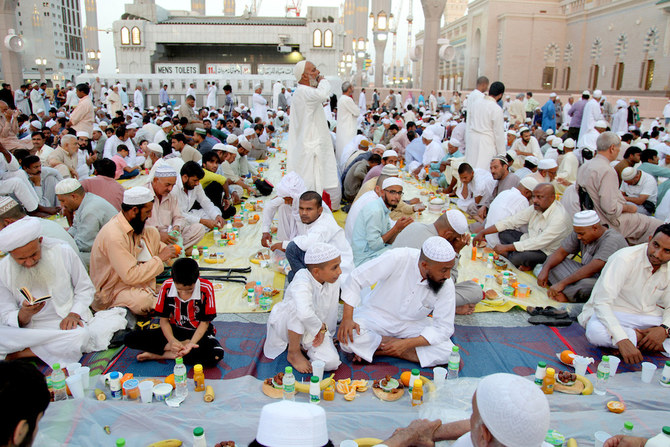Two years ago, at the height of the early stages of the COVID-19 pandemic, Muslims around the world were forced to observe the holy month of Ramadan under lockdown.
They were deprived of the chance to spend time with their extended families and enjoy the tradition of breaking the fast together, to say nothing of the opportunity to make the pilgrimage to Makkah and Madinah.
Now, thanks to the protections offered by mass vaccinations, many precautions have been relaxed, including social-distancing rules, travel bans are being lifted, and a semblance of normality is beginning to return to daily life. As a result, many Muslims around the world will, for the first time since 2019, once again be free to observe Ramadan in the ways they are used to.
The holiest month in the Islamic calendar is to begin this year on April 1. As usual the exact date will not be known for sure until a committee of astronomers and advisers observe the crescent moon. Once the sighting is confirmed, Muslims will begin a month of daytime fasting.
No one suspected on the final day of Ramadan in 2019, June 3, that the pilgrims who had gathered at the Grand Mosque in Makkah and the Prophet’s Mosque in Madinah to perform the Taraweeh prayers would be the last to do so during Ramadan for quite some time.
Nine months later, on March 11, 2020, the World Health Organization declared that the novel coronavirus outbreak that initially emerged in the Chinese city of Wuhan had become a full-blown global pandemic. Governments worldwide soon began to respond by imposing stringent controls on freedom of movement and social interaction.
The Saudi Ministry of Health announced the first confirmed case of COVID-19 in the Kingdom on March 2 that year. The Saudi patient, who had traveled from Iran via Bahrain over the King Fahd Causeway, was immediately quarantined.
The ministry dispatched infection-control teams to trace and test anyone he had been in contact with. Two days later, a second Saudi tested positive for the virus and soon cases of COVID-19 began to increase rapidly across the Kingdom, as in many other countries.
On March 6, a photograph of the circular courtyard in Makkah’s Grand Mosque went viral on social media. Normally packed with worshipers clad in white robes circling the Kaaba, the dish, as the courtyard is also known, was empty, lifeless and still — completely deserted except for a few security guards.
The depressing image seemed to encapsulate the severity of the rapidly escalating health emergency.
“The sight of that empty courtyard was a reality check,” Sanaa Abdulhakeem, 72, a retired Saudi educator, told Arab News.
“Never in my life have I seen the mosque empty. I was born right across from the mosque in Makkah and have lived all my life near it. It’s a place that is always buzzing with life. A hush falls over it only when worshipers are praying in unison with the imam.”
Pandemic restrictions meant that Abdulhakeem and her relatives were forced to break with a cherished family tradition of welcoming and feeding visiting pilgrims. She is excited about resuming this charitable activity this year.
“Every year, my sons and grandsons head to the mosque’s outdoor courtyards to distribute hot meals, dates, water and laban,” she said. “We all pitch in together, and their father and I oversee the process of packaging.
“It is a family affair that we weren’t allowed to experience for two years and that was difficult. How can you cut a 35-year-old habit that grew into a family affair?”

